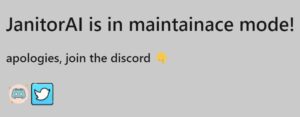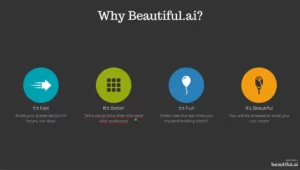The Naz API breach, a colossal and complex event, has surfaced as a pivotal discussion point in the realm of digital privacy and safety. This breach, now under the spotlight thanks to the efforts of the cyber security service Have I Been Pwned, is not just another statistic in the growing ledger of digital compromises. It represents a profound intrusion into the privacy and security of an astonishing 71 million individuals whose email addresses are linked to this breach.
This introduction is the start of a detailed look at the Naz API breach. We’ll explore how big it is, how it was done, and what it means for people and the online world. As we go into the details of this big cyber incident, we want to clearly explain how large it is, how cleverly it was carried out, and the challenges it brings in keeping our online identities safe in a world where everything is more and more connected.

Naz API Breach affects 71 million accounts
The Naz API breach, an extensive and intricate data compromise, has recently been brought into the public eye by the esteemed cyber security service Have I Been Pwned. A staggering 71 million email addresses linked to this breach have been added to their notification service. This incident isn’t just a statistical anomaly; it symbolizes a significant breach in the digital privacy and security of millions worldwide.
FNF data breach that affected 1.3 million customers confirmed
This dataset, consisting of 319 files totaling 104GB and containing 70,840,771 unique email addresses, raises significant concerns, says Bleeping Computer. While it includes a vast number of emails, each address likely corresponds to multiple records from different sites, indicating the extensive reach of this breach.
Naz.API data leak
The way this data was collected and stored is particularly alarming. Text files and images containing stolen data were compiled into archives, known as “logs”, and then uploaded to remote servers for later collection by the attackers. This method indicates high organization and intent in the data theft process.
The fate of stolen credentials is varied. Some are used to breach more accounts; others are sold in the dark corners of the internet, while some are released for free on hacker forums. The goal? To gain a reputation in the underground hacking community. The Naz.Despite its name, API dataset is not associated with network-attached storage devices but rather is a collection of these ill-gotten gains.
You’re one of 70,840,771 people pwned in the Naz.API data breach
byu/Aggravating_Towel_60 inprivacy
The dataset became more famous when it helped run a secret online service. This service lets people search for stolen info like names, phone numbers, and email addresses. The service was closed in July 2023 because people were worried it was being misused. However, it was opened again for a short time in September. This shows that stolen data can still be a problem when it gets into the wrong hands.

What is Naz.API?
The Naz.API dataset, a term that has become synonymous with large-scale data breaches, represents a collection of over a billion stolen credentials. These credentials are a mix, sourced from both credential stuffing endeavors and logs from information-stealing malware. The emergence of this dataset into the public domain highlights the ongoing struggle against cyber threats.
HealthEC data breach hits 4.5 million patients
Troy Hunt, the creator of Have I Been Pwned, recently brought this issue to the forefront with his announcement regarding the Naz.API dataset. Hunt’s blog post recounts his encounter with a major tech company that brought this credential-stuffing list to his attention. Initially overlooked, this list turned out to be a segment of the larger Naz.API dataset.
Featured image credit: Towfiqu barbhuiya/Unsplash
- SEO Powered Content & PR Distribution. Get Amplified Today.
- PlatoData.Network Vertical Generative Ai. Empower Yourself. Access Here.
- PlatoAiStream. Web3 Intelligence. Knowledge Amplified. Access Here.
- PlatoESG. Carbon, CleanTech, Energy, Environment, Solar, Waste Management. Access Here.
- PlatoHealth. Biotech and Clinical Trials Intelligence. Access Here.
- Source: https://dataconomy.com/2024/01/18/naz-api-breach-71-million-emails/
- :has
- :is
- :not
- :where
- 1
- 1.3
- 2023
- 70
- a
- About
- Accounts
- added
- address
- addresses
- affected
- again
- against
- All
- an
- and
- Announcement
- Another
- api
- archives
- ARE
- around
- AS
- associated
- At
- attention
- BE
- became
- because
- become
- been
- being
- Big
- Billion
- BleepingComputer
- Blog
- both
- breach
- breaches
- Brings
- brought
- but
- by
- CAN
- carried
- challenges
- clearly
- closed
- collection
- community
- company
- compiled
- complex
- compromise
- Concerns
- connected
- Consisting
- corners
- corresponds
- creator
- CREDENTIAL
- credential stuffing
- Credentials
- credit
- Customers
- cyber
- cyber security
- Dark
- data
- Data Breaches
- Despite
- detailed
- details
- Devices
- different
- digital
- digital privacy
- discussion
- domain
- done
- each
- efforts
- emails
- emergence
- encounter
- endeavors
- esteemed
- Event
- everything
- Explain
- explore
- extensive
- eye
- famous
- fate
- Files
- Find
- For
- forefront
- forums
- Free
- from
- Gain
- Gains
- globe
- Go
- goal
- Growing
- hacker
- hacking
- Hands
- happened
- Have
- helped
- High
- highlights
- his
- Hits
- How
- However
- HTTPS
- hunt
- i
- identities
- image
- images
- in
- incident
- includes
- indicates
- indicating
- individuals
- info
- initially
- intent
- Internet
- into
- intricate
- Introduction
- issue
- IT
- ITS
- jpg
- July
- just
- keeping
- known
- large
- large-scale
- larger
- later
- Ledger
- Lets
- like
- likely
- linked
- List
- Look
- major
- malware
- max-width
- means
- method
- million
- million customers
- millions
- mix
- more
- multiple
- name
- names
- notification
- now
- number
- numbers
- of
- on
- ONE
- ongoing
- online
- opened
- organization
- Others
- our
- out
- over
- particularly
- People
- phone
- pivotal
- plato
- Plato Data Intelligence
- PlatoData
- Point
- Post
- privacy
- Privacy and Security
- Problem
- process
- profound
- public
- raises
- rather
- reach
- realm
- received
- recently
- records
- regarding
- released
- remote
- represents
- reputation
- Run
- safe
- Safety
- says
- Search
- Secret
- security
- segment
- September
- servers
- service
- Short
- Shows
- significant
- Sites
- sold
- some
- sourced
- Spotlight
- staggering
- start
- statistical
- Still
- stolen
- storage
- stored
- Struggle
- stuffing
- synonymous
- tech
- Tech Company
- term
- text
- thanks
- that
- The
- theft
- their
- then
- These
- they
- this
- threats
- time
- to
- totaling
- Turned
- under
- unique
- uploaded
- used
- Vast
- want
- was
- Way..
- we
- went
- were
- What
- when
- while
- whose
- with
- world
- worldwide
- worried
- Wrong
- wrong hands
- zephyrnet











